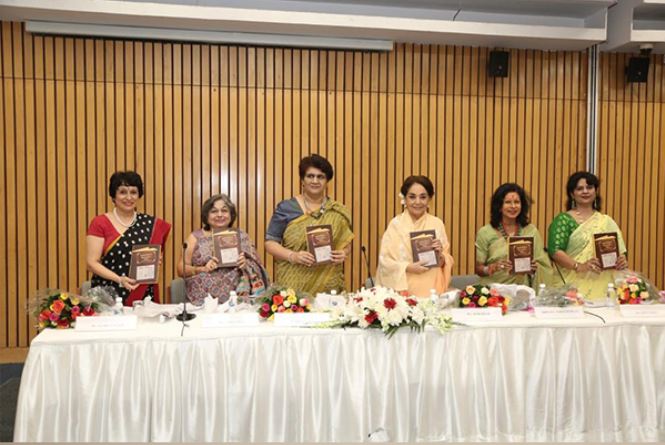Book on memoirs of IAS wife 'Leaves from a Bureaucrat's Diary" launched in Delhi
Author Smita Shah's new book 'Leaves from a Bureaucrat's Diary' contains glimpses of the struggle of wives of bureaucrats, and it was released on Saturday. Read more on Dynamite News:

New Delhi: Author Smita Shah's new book 'Leaves from a Bureaucrat's Diary' contains glimpses of the struggle of wives of bureaucrats, and it was released on Saturday. The book has a unique quality in itself that makes it different from other books. It is an autobiography of a "bureaucrat," an appellation coined by the author, to represent the species called the wives of bureaucrats.
Talking about the inspiration for the book, Shah revealed, "My muse was first awakened in the early 80s when I wrote a few pieces. The excitement of seeing my name in print was soon over and I was quiet for many years. Then it all began some 20+ years ago when someone presented us with a hard-bound leather diary more like a notebook, with my husband's name on it. I told myself I have to start writing again and so I did."
"The introduction in the book was the first piece written in the diary and it is reproduced here and I would like to read it now. Of course, I changed the name from introduction to Prologue in the book. After making the outline of my book chapter-wise I soon forgot all about it got busy with daughter's wedding birth of grand-daughters and so on," she added.
Read also: Mathura temple incident: Probe panel to submit report in 15 days
Also Read |
UP: CBI raids IAS officer B Chandrakala's residence in Lucknow
The book is in three parts where the first part contains the story of her life from childhood through her experiences as the career of her husband progressed. This brought her in touch with the literati and glitterati of India.
While the second part is dedicated to the time Shah has spent in the company of most of the living saints of our times viz Baba Neem Karoli (whose following consisted of the likes of Steve Jobs and Mark Zuckerberg), Devraha Baba, Sai Baba of Puttaparthi, Ma Anandmayee, Mother Teresa and Sri Sri Ravi Shankar, to name a few.
And the last part is a miscellany of some of her articles published in journals from time to time and some of her travelogues.
Shah revealed her experience working with IAS Officers Wives Association (IASOWA) magazine, which started in 2013. She also said that she used to contribute to that magazine.
"Roll down to 2019, when I broke my leg and had surgery and went into a coma too. I was totally grounded for a year. In the beginning, I saw a lot of TV serials, series and movies and soon got fed up with the screen. I also read a lot of the fat and thick books which had earlier intimidated me. After doing a lot of reading I decided why don't I do some writing myself? So I scurried for my old diary and got into the act. I decided to turn my adversity into an opportunity. I just started writing about the saints I had come in contact with. These pieces form part two of the book. I just sent them to some people close to me. They started asking me, Are you writing a book?"
Also Read |
Very sad that BJP calling me 'terrorist': Arvind Kejriwal
Smita Shah, the author of this book is known to her friends as a zesty, fun-loving, caring, convivial spouse of a civil servant who firmly believes in the dictum "always keep your face towards the sunshine and shadows will fall behind you."
Born in Allahabad, now Prayagraj, on 1st August 1948, she did her Masters in English Literature from St John's College, Agra.
She and her husband grew up together too as childhood friends who shared the same philosophy of life and the same ideals. As a student, she had the brilliance and the insatiable appetite for knowledge to become an IAS officer herself, but she chose instead to be a Bureaucrat, a sobriquet she jocularly coined for an IAS wife. She saw herself as a force multiplier to the endeavours and initiatives of her husband, with whom she was instinctively and artfully in sync. Thus when her husband was quelling riots in Aligarh she was seen spending all her time bringing the women of the warring communities together and applying balm to their sores.
The national press hailed her as a "Lady with a Healing Touch". Much of the gravitas in her life came from her contacts with the living saints of our times and their abiding influences. They taught her to be the rainbow of hope in the lives of everyone who came in touch with her. (ANI)
 Dynamite News
Dynamite News 